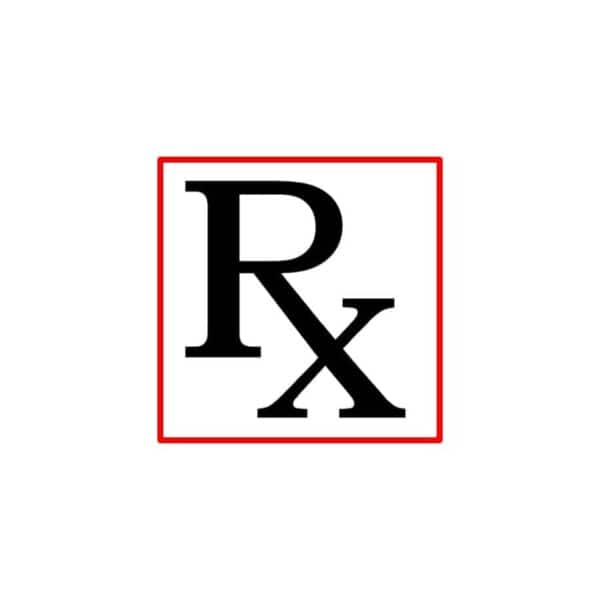
Dry Eye Syndrome: Treatment
October 10, 2020

The final blog in our Dry Eye Series covers the treatment of dry eye syndrome. Like many conditions, the severity of the symptoms determines the course of treatment. If symptoms still persist, another level of treatment can be initiated. These are some of the most common ways to alleviate symptoms of dry eye syndrome.
Artificial Tears
Artificial tears are the easiest treatment for dry eyes. The drops function to replace the decreased quantity and quality of tears on the front surface of the eyes. Some people use artificial tears on a situational or as needed basis. Others use artificial tears as a maintenance therapy to minimize the reoccurrence of symptoms (burning, watering, itching, etc.).
Artificial tears are over-the-counter, meaning a prescription is not needed. It can be overwhelming to choose a bottle of drops since there are many brands and types available. The various formulations are specific to the type or cause of dry eye syndrome. Sometimes your eye doctor will recommend a combination of different drops.
A big difference between the drops is the thickness or viscosity. A typical, basic artificial tear has a watery consistency. Artificial tear gel drops are slightly thicker and may temporarily blur vision after inserting. Gel drops are good to use before sleeping at night, since the eyes will be closed, and it won’t matter if the vision is slightly blurry. An even thicker alternative is an ointment formulation, which will absolutely blur vision after use.
Another important distinction between drops is whether they are preservative-free. In order to prolong the shelf life and ensure the drops do not become contaminated with germs, preservatives are used in the artificial tears. Unfortunately, preservatives can irritate the eyes, especially if used too often. Therefore, preservative-free artificial tears are better for people with more sensitive eyes, allergies, or if using artificial tears more than four times per day.
Warm Compresses
Dry eye syndrome can involve other underlying conditions, such as meibomian gland dysfunction (MGD). The meibomian, or oil, glands line the eyelid margins and can become clogged. When this happens, the tear film does not receive the necessary amount of oil to help protect the tears from immediately evaporating into the air. In order to help the dry eyes, the MGD must be treated first. This is primarily done with the use of warm compresses.
The heat of the warm compress melts the oil to help it flow out of the glands more easily. It is also helpful to give the eyelids a gentle massage after performing a warm compress to assist the movement of oil out of the meibomian glands. The upper eyelids should be massaged in a downward motion, while the lower eyelids are rubbed in an upward motion. Vision might become blurry for a couple of minutes as the oil may initially accumulate in the tear film.
The warm compress should be as hot as possible without burning the eyelids, of course. Microwavable masks tend to work the best because a washcloth does not stay hot enough. Plus, the nuisance of having to stand at the bathroom sink to keep the washcloth hot enough deters most people from maintaining good compliance with the compresses.
Prescription Drops
If over-the-counter artificial tears are not enough, there are prescription drops available to help increase the production of an individual’s own tears. Restasis® and Xiidra® (pronounced Zye-Druh) are the two primary drops available. Both work similarly by decreasing the inflammatory cells in the lacrimal (tear) gland, which ultimately increases natural tear production. In order for the drops to be effective, they must be used consistently for a minimum of 90-days before noticing an improvement in symptoms. Once the drops are discontinued, the inflammatory cells return and the 90-day process must begin again to achieve the same symptom relief. These drops should be used in conjunction with artificial tear supplements.
Punctal Plugs
Very small silicone plugs are inserted into the tear ducts (little holes in the corner of the eyelids). By blocking the tear ducts, the tears stay on the eyes longer, which can make them feel less dry. A downfall of punctal plugs is that poor quality tears become trapped on the surface of the eyes. Most people with dry eye syndrome have these poor quality tears with inflammatory particles that can make symptoms worse. It is not ideal to keep these tears trapped on the eyes, which makes punctal plugs a somewhat controversial treatment approach.
Other Tips
Here are some other tips that can help decrease symptoms of dry eye syndrome:
– Stay hydrated. Since dehydration can make dry eye symptoms worse, it is important to drink plenty of water throughout the day.
– Eat a diet rich in omega-3 fatty acids found in certain fish and nuts. Some people benefit from taking an omega-3 supplement to get higher levels of omega-3.
– Follow the 20-20-20 Rule and remember to blink when on digital devices.
– Maintain good eyelid hygiene by fully removing makeup at night and washing eyelids to minimize dry eye symptoms related to blepharitis.
– Follow the proper contact lens disposal schedule. It may be necessary to decrease contact lens wear time or talk to your eye doctor about switching to a different lens material or trying daily disposable contacts, which are better for dryness.
– Treat underlying systemic conditions, especially poorly controlled autoimmune and thyroid disorders.
Addressing dry eye syndrome can be more complicated than self-treating at home, which is why it is important to discuss an appropriate treatment strategy with your eye doctor. Call our office (717-652-7710) to schedule a dry eye evaluation.
We hope you found our Dry Eye Series helpful and educational.